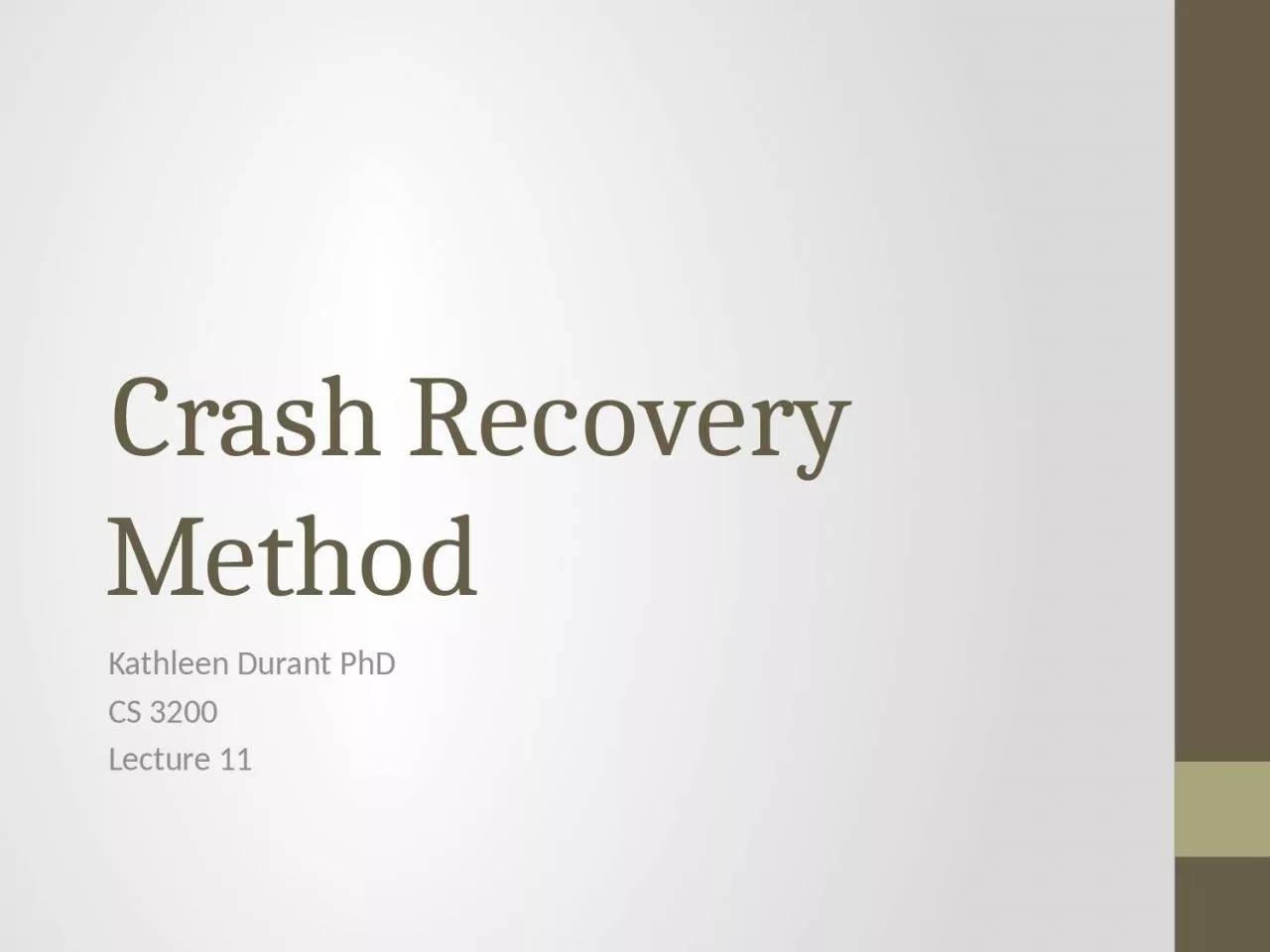PPT-Crash Recovery Method Kathleen Durant PhD
Author : bella | Published Date : 2023-06-21
CS 3200 Lecture 11 Outline Overview of the recovery manager Data structures used by the recovery manager Checkpointing Crash recovery Write ahead logging ARIES
Presentation Embed Code
Download Presentation
Download Presentation The PPT/PDF document "Crash Recovery Method Kathleen Durant P..." is the property of its rightful owner. Permission is granted to download and print the materials on this website for personal, non-commercial use only, and to display it on your personal computer provided you do not modify the materials and that you retain all copyright notices contained in the materials. By downloading content from our website, you accept the terms of this agreement.
Crash Recovery Method Kathleen Durant PhD: Transcript
Download Rules Of Document
"Crash Recovery Method Kathleen Durant PhD"The content belongs to its owner. You may download and print it for personal use, without modification, and keep all copyright notices. By downloading, you agree to these terms.
Related Documents














